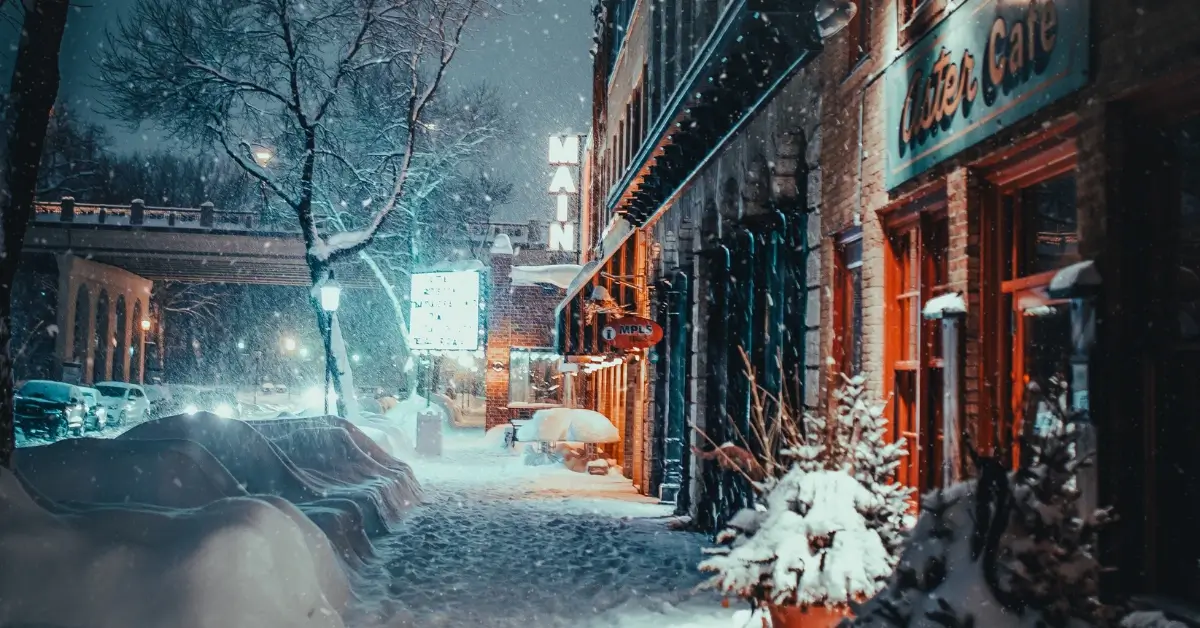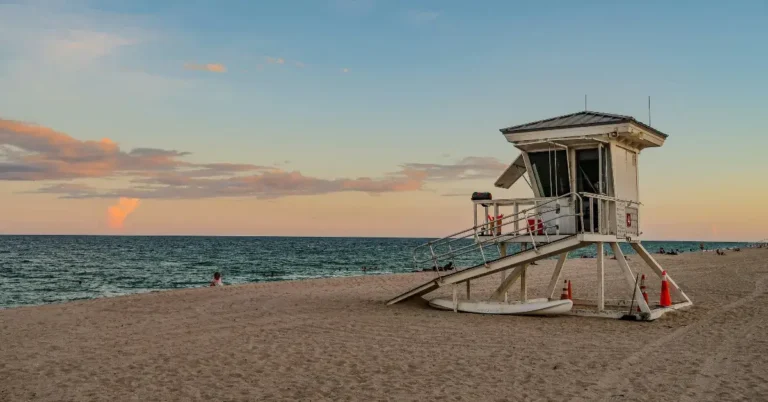Snow in New York City can transform the bustling metropolis into a serene, picturesque landscape. As you walk through the snow-blanketed streets, the usual sounds of the city are softened, creating a unique ambiance that captures the essence of a winter wonderland. The experience of snow in the city is a tale of two natures—while it can add magic to the skyline, it also brings challenges for commuters and city services.
The city’s response to snow is a testament to its resilience, as fleets of plows and salt spreaders work tirelessly to keep the streets clear and safe. For city-dwellers and visitors alike, each snowfall brings a mix of excitement and caution. Whether it’s children building snowmen in Central Park, or workers navigating slippery sidewalks, snow in New York City is a shared experience that leaves a memorable mark on everyone’s winter season.
Historical View of Snow in New York
New York’s winters have been marked by their share of extreme snow events and periods of scant snowfall. You’ll discover the extremes that have defined the cold season in the city over the years.
Record-Breaking Snowfalls
The Big Apple has seen its fair share of record-breaking snowfalls, with some storms entering the history books for their sheer intensity. Notably, the city faced the highest recorded snowfall in its history in 2016, during Winter Storm Jonas, with Central Park receiving a jaw-dropping 26.9 inches of snow. This blizzard, also known as Snowzilla, remains a significant benchmark when talking about historical snow in New York. Over the years, there have been multiple instances when snowstorms have brought the bustling city to a standstill, encapsulating the true might of Mother Nature.
- Feb 11-12, 2006: An impressive 26.9 inches
- Dec 26-27, 1947: Central Park covered by 25.8 inches
- Mar 12-14, 1888: The Great Blizzard dumps approximately 21 inches
Snow Drought Periods
However, winter in New York isn’t always synonymous with significant snow in New York . There have been notable snow droughts, characterized by prolonged snowless streaks leading to a scarcity of winter white. One such period brought mild distress to snow lovers when the winter of 2020-2021 saw only 12.5 inches, much lower than the seasonal average. These snow drought periods contrast sharply with the heavy accumulations from past storms, highlighting the unpredictability of winter in New York.
- Winter of 2020-2021: Just 12.5 inches of accumulation
- Winter of 1972-1973: Another notable snow drought with minimal accumulation
Understanding the historical canvas of snow in New York helps us appreciate the city’s resilience and the way its residents adapt to the whims of winter each year.
Understanding Snowfall
When you’re gearing up for winter in New York, it’s essential to grasp the ins and outs of snowfall—how it’s categorized and what influences its arrival and intensity.
Types of Snow Precipitation
Snow precipitation takes various forms, and the type that blankets New York depends largely on the atmospheric conditions at play. You’ll encounter light snow, often described as flurries, that dusts the cityscape without much accumulation. Conversely, heavy snow, capable of quickly blanketing streets and disrupting transportation, calls for prompt snow removal strategies. Additionally, sleet and freezing rain can also occur, which are not officially snow but related forms of winter precipitation involving frozen or partially frozen raindrops.
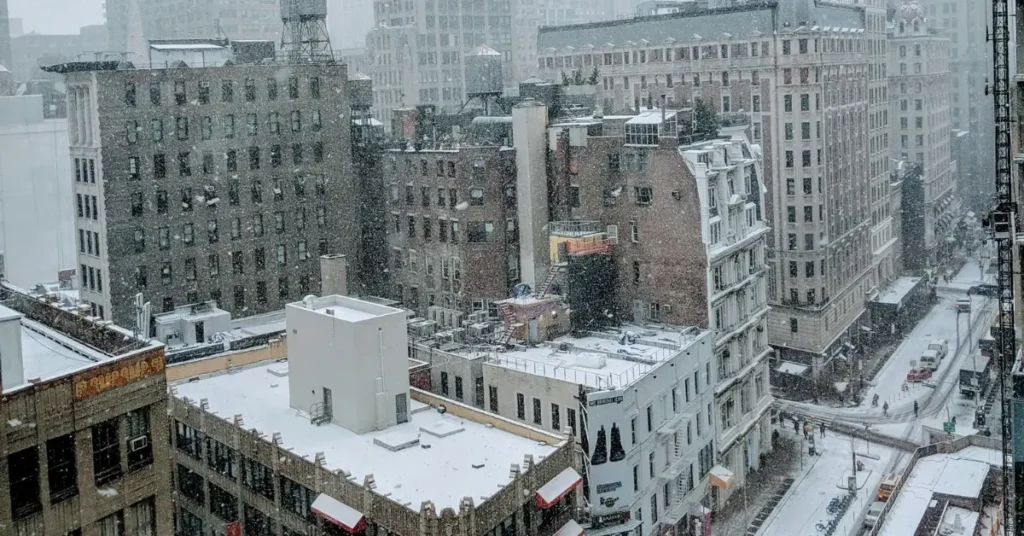
Factors Influencing Snowfall
Several key factors determine if you’ll need to shovel your sidewalk or if you’re likely to experience travel delays due to snow accumulation. Temperatures, both at ground level and aloft, are crucial; they must be at or below the freezing point for snow to form and reach the ground without melting. Furthermore, the path of a winter storm and the amount of moisture available significantly influence snowfall amounts. A storm that veers along the coast, for example, can tap into Atlantic moisture, leading to significant accumulations, such as the events New York and New Jersey have experienced.
New York’s Weather Forecasting
When it comes to snowfall in New York, the accuracy of forecasting is crucial for your daily planning and safety. The National Weather Service and various meteorologists utilize sophisticated techniques to predict snow and provide timely updates.
The Role of the National Weather Service
The National Weather Service (NWS) plays a pivotal role in weather forecasting across the United States, including New York. When snow is on the horizon, the NWS issues alerts and warnings to keep you informed. Their first alert weather team works around the clock to monitor changing conditions, using the latest technology to provide accurate forecasts.
- Alerts: Warnings of impending snowfall
- Updates: Regularly revised forecasts
These efforts are essential in preparing for the impact of winter weather, from school closings to suspended parking rules.
Techniques in Snow Prediction
Meteorologists at the NWS and other weather forecasting services like AccuWeather employ a variety of techniques to predict snow:
- Satellite Imagery: To observe cloud patterns and movement
- Radar: To detect precipitation and its intensity
- Computer Models: Simulations that predict weather changes
- Ground Reports: Information from various locations to verify predictions
Using these methods, forecasters can estimate not just when snow will begin and end, but also its expected accumulation. For instance, recent forecasts predicted more than 5 inches of snow in certain areas before a significant drop in temperature. Accurate snow prediction is vital for New York City’s readiness for winter storms.
Impact of Snow on Daily Life
Experiencing snow in New York can be magical, but it certainly affects your day-to-day activities, especially when it comes to getting around the city. Here’s how a snowy day might change your routine.
Effects on Commute and Travel
When snow blankets New York, your commute can change dramatically. The Department of Sanitation works hard to deploy plows to clear roadways, but the sheer volume of snow can slow down traffic, delay public transportation, and make sidewalks treacherous. You’re likely to encounter travel advisories urging caution or advising against non-essential travel during heavy snowfall.
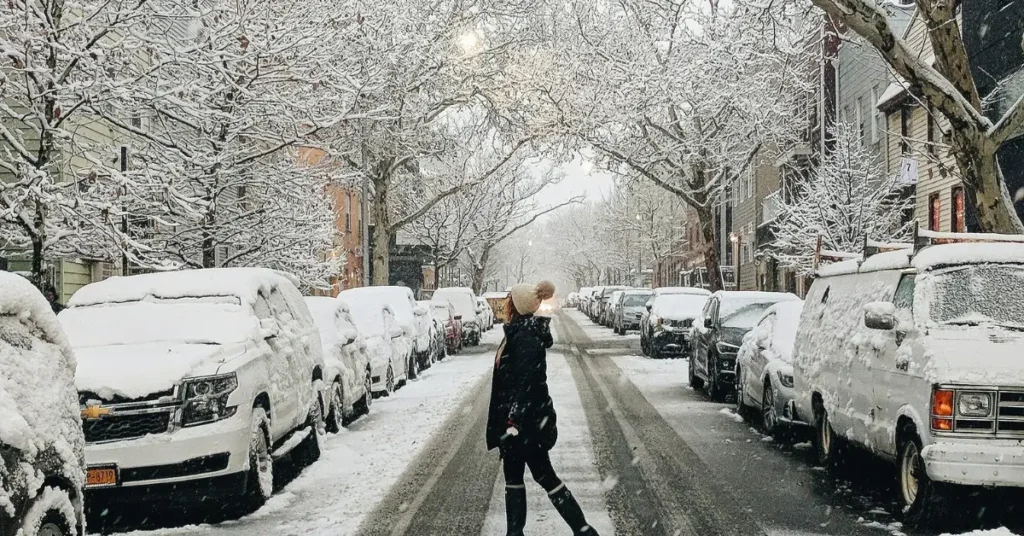
School and Work Closures
New York’s public schools may decide to close or switch to remote learning during significant snow events to ensure student and staff safety. Similarly, businesses can delay openings or close altogether, affecting your work schedule. Always check for official closure announcements to stay informed.
Snow Removal and Sanitation
The New York City Department of Sanitation has a rigorous snow removal procedure. Scores of plows and salt spreaders hit the streets to manage snowfall and ice. However, keeping the sidewalks clear is a shared responsibility. As a New Yorker, you’re expected to help shovel and salt your sidewalk to maintain safety and accessibility.
Winter Weather Alerts and Safety
When winter weather intensifies in New York, your safety depends on staying informed and being prepared. The following information will help you navigate alerts and prepare for inclement conditions.
Navigating Winter Storm Warnings
Winter storm warning: This alert is issued when significant amounts of snow, sleet, or ice are expected, making travel dangerous. If you’re caught in a situation with a winter storm warning, it’s best to stay off the roads. For example, during a recent snowfall, New York City was forecasted to receive 1-4 inches of snow, prompting such warnings and advisories.
- Winter weather advisory: Less severe than a warning, this advisory still requires your attention, as it means that winter weather conditions are expected to cause significant inconveniences and may be hazardous, especially if you’re not cautious.
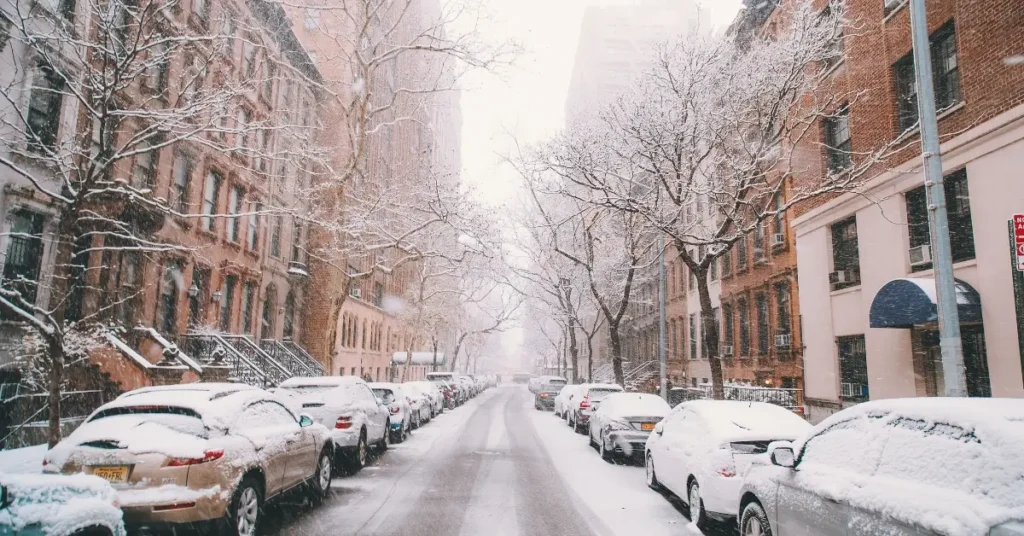
Preparations for Winter Weather
To prepare for winter weather:
- Stay informed about the latest weather alerts via news updates or online resources.
- Plan ahead for delays and slower traffic.
- Ensure your vehicle has a full tank of gas, adequate winter tires, and an emergency kit.
- Be aware that freezing rain can create slippery surfaces without much warning, so it’s important to have a stock of salt or sand at home for walkways and driveways.
Remember, a little preparation goes a long way in ensuring your winter is as safe and comfortable as possible. Stay warm and informed!
Snow Activities and Culture in NYC
When you think of winter in New York City, snow-blanketed streets and the iconic Central Park probably come to mind first, offering a magical playground for both arts and outdoor activities.
Central Park Wintertime
Central Park transforms into a winter wonderland, inviting you to explore its snowy landscapes. Imagine gliding across Wollman Rink, with the city skyline as your backdrop. You can also join in on the fun during the annual Winter Jam, Central Park’s free winter sports festival, where snowshoeing and sledding become the day’s highlights. Don’t miss a leisurely walk to take in the sights of Bow Bridge and Bethesda Terrace, draped in a pristine layer of snow.
- Activities in Central Park:
- Ice Skating at Wollman Rink
- Snowshoeing
- Sledding during Winter Jam
- Scenic walks near Bow Bridge and Bethesda Terrace
Arts and Entertainment in the Snow
The snow only amplifies New York City’s vibrant arts scene. Enjoy the thrill of a Broadway show as you step out onto streets sparkling from the winter’s touch. Numerous galleries and museums offer special winter exhibits, making them a perfect retreat if you’re looking to escape the cold for a few hours. Additionally, unique outdoor installations and performances can be found throughout the city, turning ordinary places into extraordinary stages set against the snow.
- Arts Highlights:
- Broadway shows
- Winter exhibits in galleries and museums
- Outdoor art installations and performances
Climate Change and Snow Patterns
Climate change is reshaping the way you experience winter, particularly influencing snow patterns in New York. Warmer temperatures have begun altering both the consistency and volume of snowfall you’re used to seeing every year.
Trends in Winter Temperatures
In recent decades, you’ve probably noticed a shift toward milder winters. Studies show a trend of increasing winter temperatures contributing to changes in the snowy landscape of New York. With average temperatures creeping up, the cold seasons have been less about thick blankets of white and more about sporadic and often slushy precipitation.
Impact on Regional Snowfall
Warmer atmospheres can hold more moisture, which one might assume means more snow. However, what’s happening in New York tells a different story. There is a trend of dwindling snowfall, leading to concerns about water resources and winter sports industries. Significant snowfall events have become less frequent, and ski resorts are feeling the effects as they face a future with potentially less profitable seasons ahead.
Future of Snow in the Tri-State Area
If you’re living in the Tri-State area, understanding how upcoming weather patterns might impact snowfall is crucial. You’ll want to keep an eye on long-term weather projections and how to adapt to changing snow conditions, especially if you’re in areas like Long Island or New Jersey.
Long-Term Weather Projections
Forecast models for the Tri-State area hint at varying snow conditions in the coming years. While predicting weather far into the future is challenging, climate trends and historical data suggest that the region could continue to experience significant winter storms. For instance, forecasts predict snowfall that could disrupt travel and city operations, including necessary parking rule suspensions in NYC. It’s clear that whether you’re in New York City or further out on Long Island, it’s wise to stay informed on the latest snow forecasts to prepare adequately for what winter may bring.
Adapting to Changing Snow Conditions
Your ability to adapt to changing snow conditions will be key in navigating future winters. Being prepared for a range of scenarios, from light dustings to severe storms, is essential. For those in New Jersey, staying updated with the National Weather Service’s bulletins and hazardous weather outlooks can guide preparation efforts. Moreover, infrastructure and city planning are likely to evolve to better handle these changes in snowfall patterns and the accompanying cold, as seen with the recent frigid temperatures following snowfall. By staying proactive and informed, you can reduce the impact of snow-related disruptions on your daily life.
Being prepared and well-informed are your best strategies for dealing with the future of snow in the Tri-State area. Keep these tips in mind, and you’ll be better equipped to handle whatever winter throws your way.

